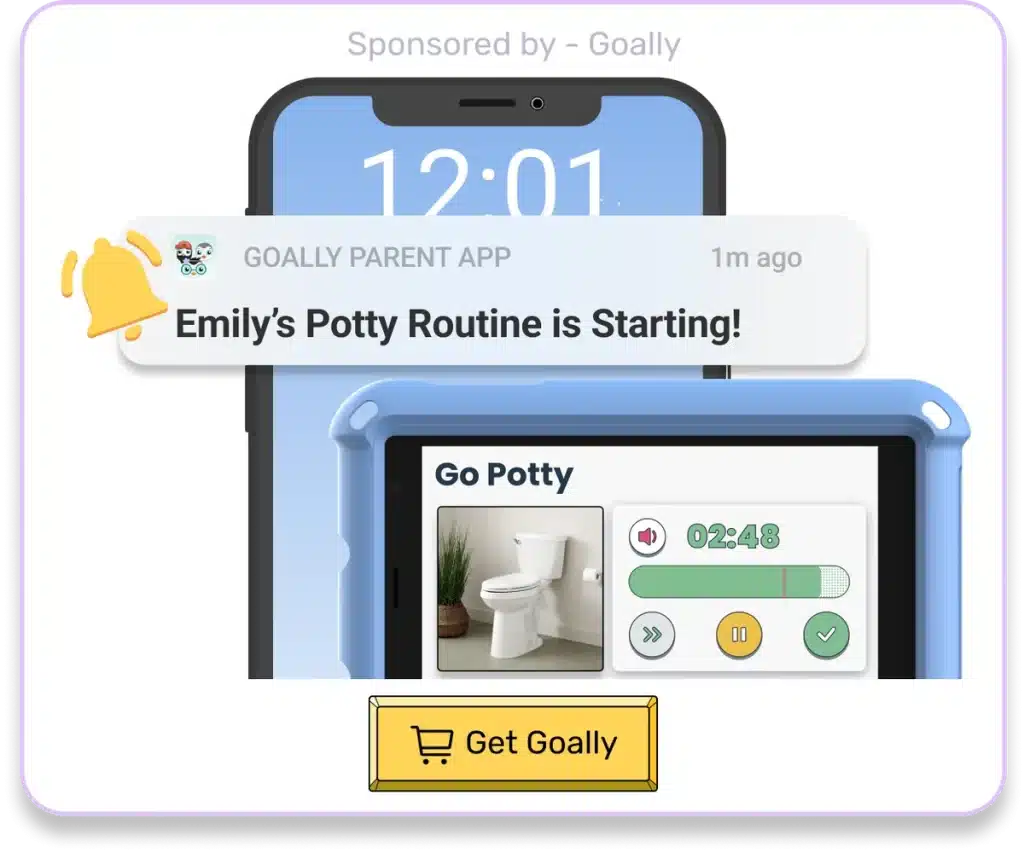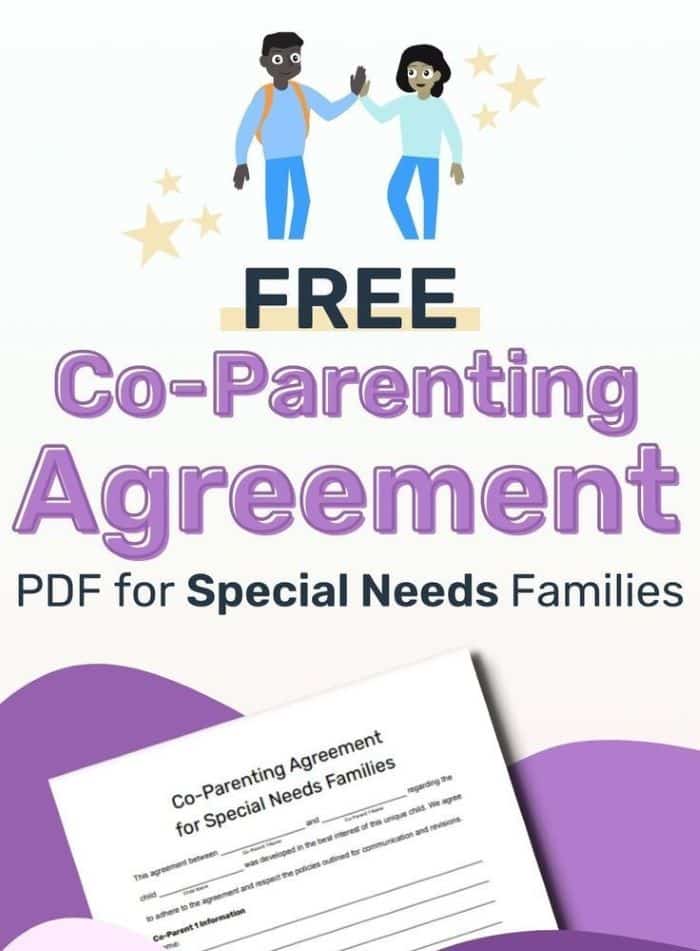Nearly 750,000 couples throughout the United States became divorced in 2019. 2.7 divorces occur for every 1,000 people. Having a child with special needs can make divorce even harder. Whether or not your divorce is amicable, a printable parenting plan template (SEE BELOW!) that lets you create a well-detailed parenting plan can help. But what is a co-parenting agreement plan? What should your plan describe? How should you write about your child in your plan? Answer these questions and you can create a path forward after your marital separation. Here is your quick guide.
Table of Contents
The Basics of a Parenting Plan Template for Co-Parents
A parenting plan is a formal document that outlines how two co-parents will raise a child following their separation. Every couple that has custody of a child and chooses to separate must develop a parenting plan.
A judge can use a plan to determine custody arrangements as well as child support. A plan can also give parenting tips to a guardian in the event that one or both of the co-parents dies. Both parents must agree on the co-parent agreement plan. If possible, you should sit down with your co-parent and work together on its terms. You can also use lawyers or third parties as intermediaries to hash a plan out.
You can talk to your child’s grandparents or other important family members about it. If you have multiple children, your plan should provide details about their lives. A co-parent agreement parenting plan is a living document. You or your co-parent can make edits to it, though only under limited circumstances. Both of you must agree to the edits for them to take effect.
1. Housing
It’s really important to be very clear about how you plan to provide housing for your child. You’ll want to write about where your child will be living and who will have physical custody.
- Consider Birdnesting: Instead of traditional custody arrangements, explore a birdnesting approach for co-parenting.
- Child-Centered Solution: In a birdnesting plan, the child resides in one stable home, and co-parents alternate living there.
- Reduced Disruption: This arrangement minimizes disruption, making it an excellent choice for children, especially those with special needs.
- Promotes Stability: Birdnesting fosters a sense of stability and security for your child during challenging times.
- Alternative Parenting Plan: If you’re seeking an innovative parenting plan, birdnesting could be the solution you’ve been looking for.
2. Financial Responsibilities
Money can be a very difficult thing to talk about, especially after a marital separation. But your co-parenting plan should provide information about who will cover what expenses. If you and your co-parent have equal incomes, you can split the expenses evenly. Health insurance and schooling are expenses that both of you should contribute to.

Read More: Parenting an ADHD Child
You should decide if one co-parent contributes to the other’s expenses while the other parent has physical custody. One parent can help the other pay for a vacation or a gift. But this is optional. If you budget your expenses, include a copy of your budget in your parenting plan. Transparency can help the judge and your co-parent understand how you spend your money.
3. Decision Making
Legal custody is a parent’s right to make decisions for their child. A judge may grant a parent physical custody or visitation rights. But they may impose limits on their legal custody. The co-parenting agreement parenting plan should have information about legal custody. Most co-parents have legal rights over their child while their child is with them. A child with special needs may need occupational therapy or a special education plan. Your plan should indicate what you will do when you and your co-parent disagree about medical care or education.
4. Behaviors
The majority of your co-parenting agreement plan should be about you and your co-parent. But you may find it necessary to give some information about your child so that you can agree on how to parent. In particular, you should describe your kiddo’s behaviors and how they respond to a behavior tracker. This will help a judge understand why you are developing the plan the way you are. Check out more on how to connect with your child.
- Medical Diagnosis: Begin by detailing any medical conditions your child has been diagnosed with.
- Symptoms and Impact: Describe the specific symptoms of the condition and how it affects your child’s daily life and well-being.
- Therapies and Treatments: Share information about the therapies and treatments your child is currently receiving to manage their condition.
- Sensory Processing Issues: If your child has sensory processing issues, explain the nature of these issues, such as hypersensitivity or hyposensitivity.
- Triggers and Coping Strategies: Discuss what triggers sensory issues in your child and the strategies you use to help them stay calm and comfortable.
5. Rewards
When it comes to parenting a child with special needs, using rewards can be really effective in encouraging them to keep going, even when they’re faced with a difficult task. And the best part is that rewards can work no matter which parent’s house the child is at.
- Specify Reward Details: Include specifics about the rewards you plan to give your child in your parenting plan.
- Small Rewards Matter: Even small rewards like treats or extra playtime can have a significant impact on your child’s well-being.
- Cost Considerations: If expensive rewards are involved, discuss how you and your co-parent will cover these costs in the parenting agreement.
- Consistency Across Homes: Ensure that your co-parenting agreement outlines a plan for maintaining consistency with rewards in both households.
Read More: What is Co-Parenting Therapy?

6. Essential Routines
Many children with special needs have essential routines. A child with autism spectrum disorder may resist attempts to adjust their routines. Talk about what your child needs to do to complete tasks like finishing their homework. If your child has a schedule for their tasks, you should include that schedule in your plan. Provide some parenting advice so a guardian knows how to help your child. They may need to speak in a soft tone so your child does not become scared.
Your Printable Co-Parenting Agreement Template
You can use a template to provide details on all of these topics. Keep in mind that a template does not carry legal weight. You still need to run your plan by lawyers and a custody judge.
Executing Your Co-Parenting Agreement Plan
Adhere to your printable co-parenting agreement as much as possible. It is okay to make small deviations from it, but don’t go against its basic terms. Stay in touch with your co-parent as much as possible. You can use apps like Goally to keep track of your child’s routines and send updates to your co-parent. Both of you should have access to the apps so you can make edits on the fly.
Goally | Routines that Actually Work
Goally’s skill building tablet for kids has routines that break down large tasks into small, achievable steps. It helps kids complete their tasks independently!

Create custom routines with your own videos & pictures for every step. The steps come in small, bite-sized pieces to help your child learn the little fundamentals (like putting the toothpaste on their toothbrush!) to achieve bigger goals. And that’s just the beginning. See it in action:
How To Create the Best Co-Parenting Agreement Plan
A co-parenting agreement plan helps you figure out how you will raise your child with special needs. You should provide many different details, including how you will cover your child’s expenses. The more detailed you are, the better your plan will be. Describe your child’s medical conditions and explain how you help mitigate their symptoms. You can use a printable parenting plan template. But make sure you run your plan by your lawyer before you sign off of it. Get the tools you need for great co-parenting – try Goally.
FAQs About Printable Co-Parenting Agreement Template
What is a co-parenting agreement? A co-parenting agreement is a document that outlines the terms of how two parents will work together to raise their child or children after a separation or divorce. Why is a co-parenting agreement important for parents of children with special needs? A co-parenting agreement is especially important for parents of children with special needs because it can help ensure that the child's unique needs are being met consistently and that both parents are on the same page about how to provide the best possible care. What should be included in a co-parenting agreement template for special needs children? A co-parenting agreement template for special needs children should include specific provisions related to the child's medical care, therapy, education, and other specialized needs. It should also outline how the parents will communicate and make decisions about the child's care. Can I find a printable co-parenting agreement template online? Yes, there are many printable co-parenting agreement templates available online that you can use as a starting point. However, it's important to customize the template to fit your specific situation and the needs of your child. What are some best practices for creating a co-parenting agreement for special needs children? Some best practices for creating a co-parenting agreement for special needs children include working with a family law attorney who has experience in this area, being open to compromise and flexibility, and making sure that the agreement is clear, specific, and enforceable.
This post was originally published on 02/14/2023. It was updated on 10/13/2023.

Goally
We help parents teach their kids life skills, like doing bedtime and morning independently. Backed by science, we incorporate evidence-based practices and expert-informed designs in all of our apps and content.







